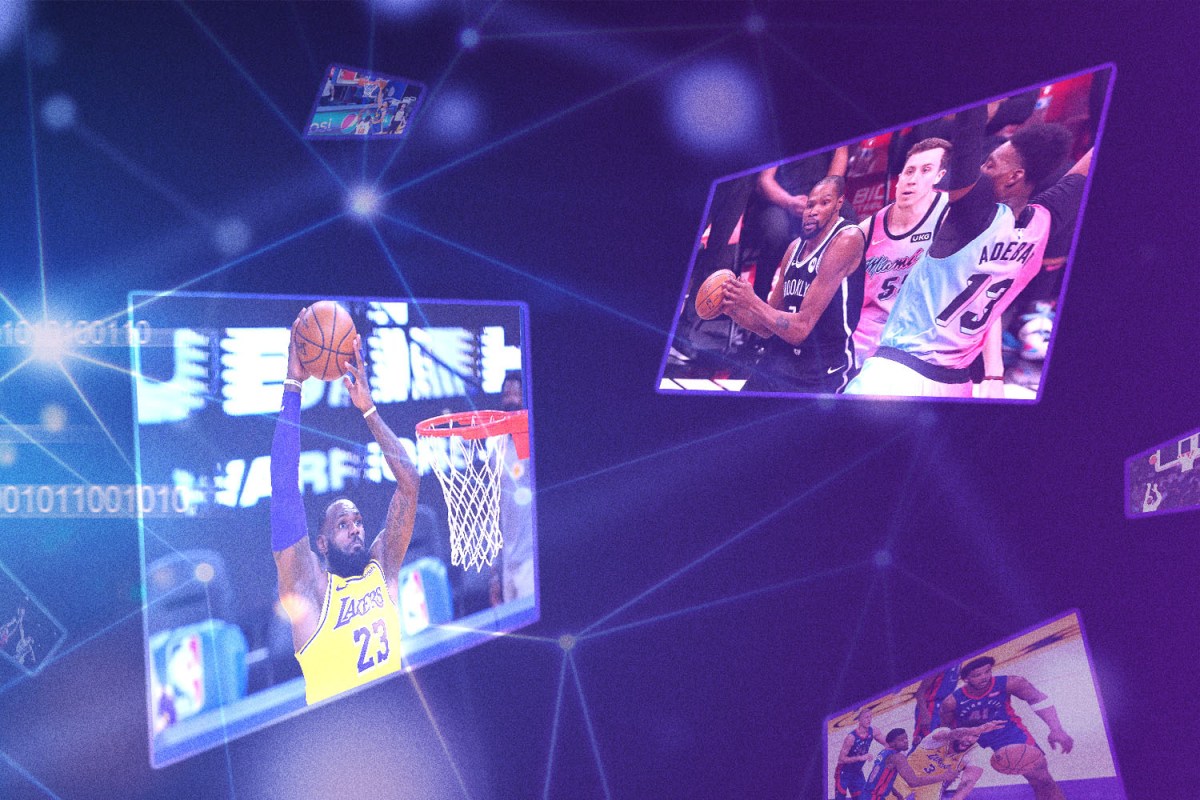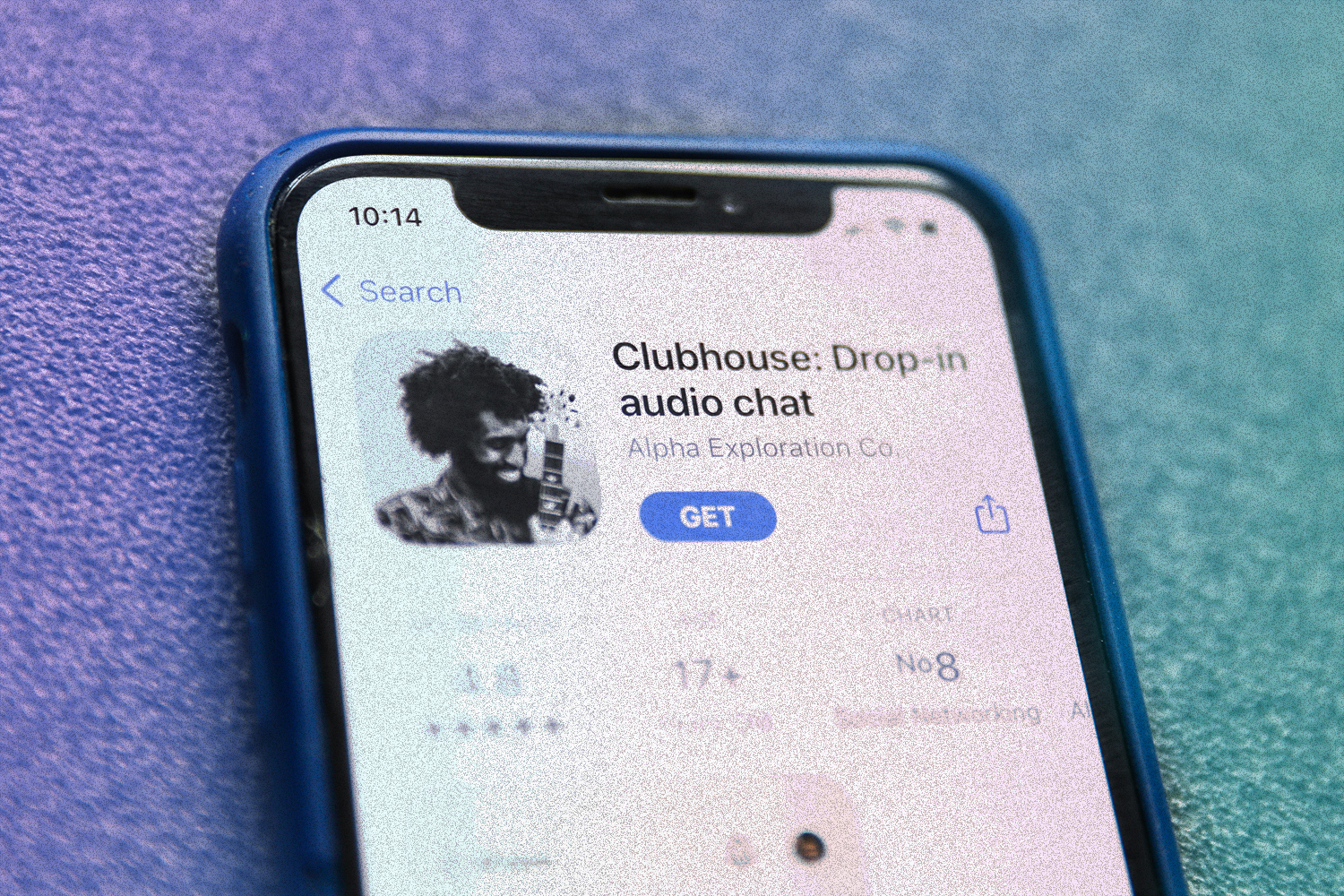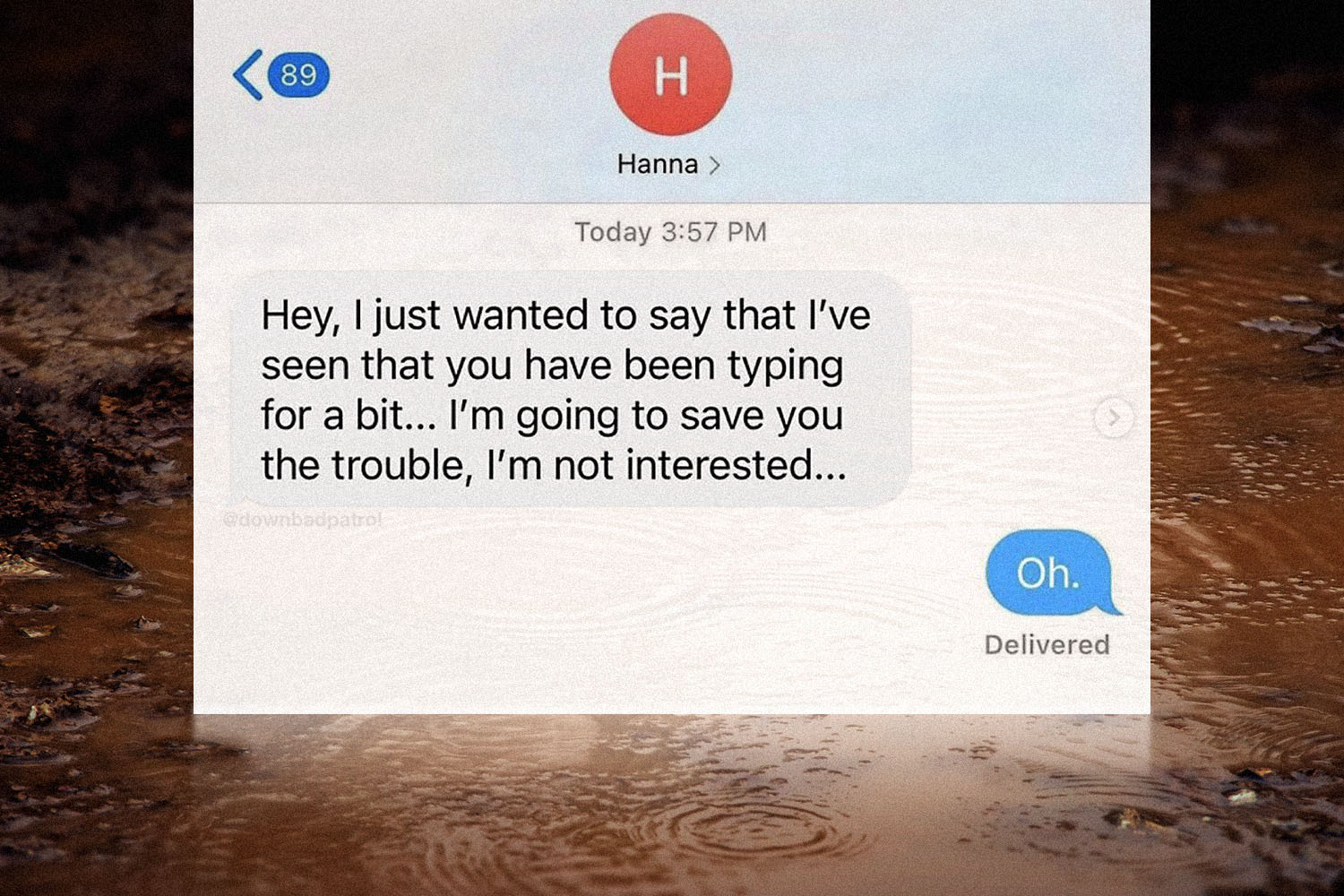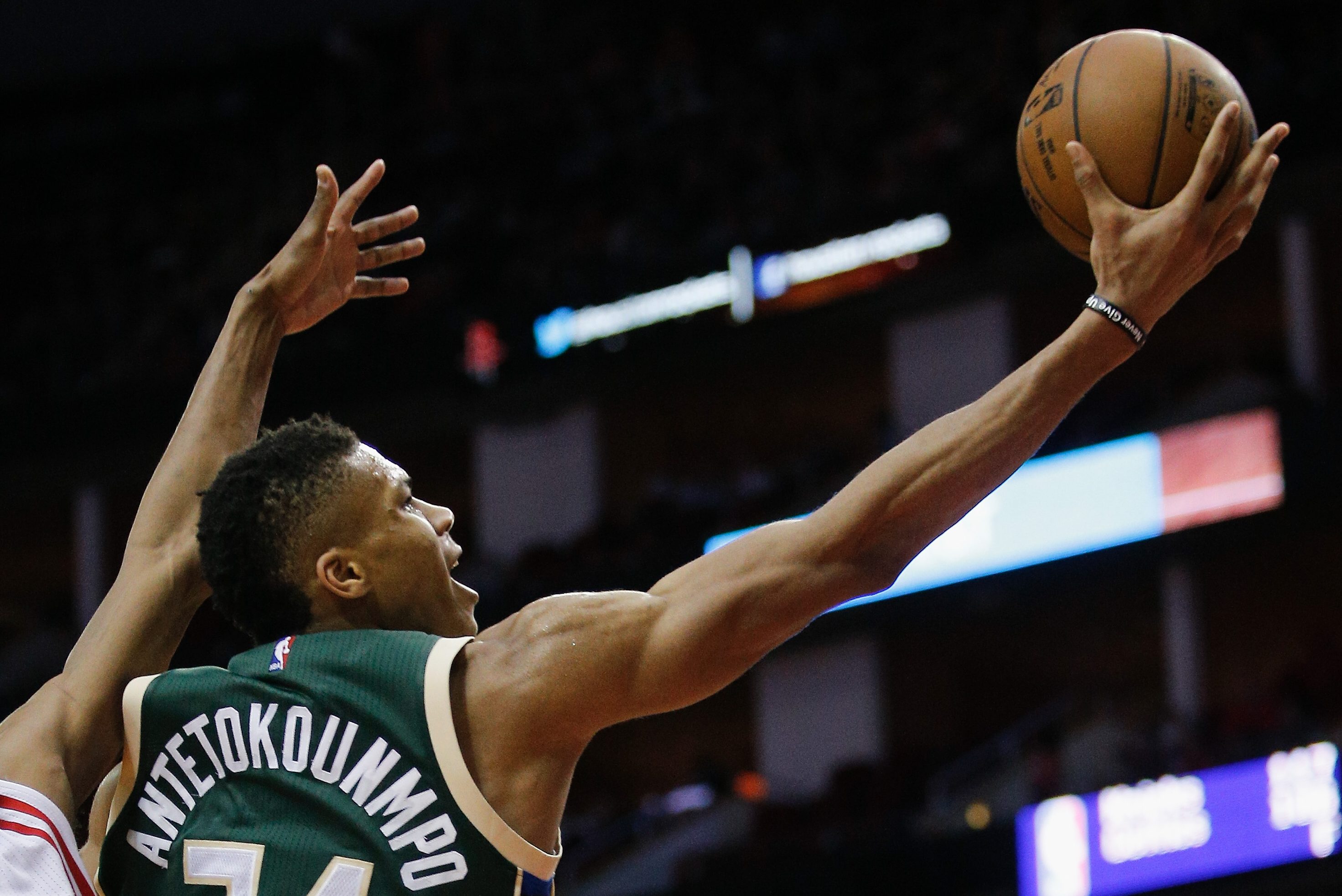As someone who covers whatever the internet is abuzz about each week, even I, an incredibly young person, have run-ins with concepts and phenomena I don’t understand at first glance. Usually, I can deduce what these new apps or trending topics are after spending a bit more time on Twitter or talking with peers about what’s going on. Until now.
NFTs are taking over my screens and undoubtedly yours. Gronk is selling his Super Bowl highlights as NFTs, Kings of Leon released an album as an NFT, the world’s first NFT home is now on the market and even our dear friend Julius Pringles just introduced an exclusive NFT pringles flavor. They’re everywhere!!! Even in my chips.
While I am completely lost when it comes to understanding what an NFT is or why they’re selling for millions of dollars, it seems no one around me has any idea, either, and you might be in a similar sinking boat drowning in a sea of NFTs. It’s why I asked Mason Nystrom, a research analyst for Messari, a crypto asset research and intelligence provider, to explain NFTs to me as if I were a 12-year-old in the hopes of finding out what the hell is going on.
So my first question to you is, what is an NFT?
Mason Nystrom: Yeah, so great question. I think the easiest explanation of an NFT is just to think of it as a digital file. Just in the way that if you were to send me an image or any type of file over email, it would be a JPEG or it could be a GIF, or any other file format. An NFT is just a file format for transferring data and information on a blockchain network.
I think one of the issues that I’m having with understanding what this is, is that I’m having a hard time visualizing it. So if I buy one, what does it look like?
So they’re very different, because at the end of the day an NFT is just a standard. So an NFT could be anything from a piece of artwork to a trading card, or you could even make it into a more complex financial product, or it could be an event ticket or, one of a thousand other different use cases. So the potential of what an NFT can be is very broad, which makes the conversation of defining it kind of hard, just because naturally people want to bucket it into, what is this one thing? When in reality, it can be a lot of different things.
A company that I formerly worked with partnered with the Sacramento Kings to issue an NFT of a jersey from a Sacramento Kings player. So, that’s just another type of application that you can see in NFTs.
Are we seeing a specific type of NFT that is more popular right now?
I would say there’s a couple mainstream use cases that are in the cultural zeitgeist right now. One is art. So artists are issuing NFTs as digital artwork, and you can add music or soundtracks to that as well.
We’re also seeing trading cards being issued as NFTs. One of the most popular trading-card NFTs today is called NBA Top Shot, which are NFTs that are issued on Flow, which is a blockchain by Dapper Labs. Most other NFTs are issued on Ethereum, which is a different blockchain. So NBA Top Shot has a partnership with the NBA where they release what they call “Moments.” That’s just what they’re calling their NFTs. And essentially they’re clips of in-game shots or passes, or NBA plays from your very favorite players like LeBron, Steph Curry or whoever it might be.
The final thing that we’ve seen — and this has been more so within the crypto space — is just on the collectible side. So you’ve seen some early Ethereum NFTs become collectibles as part of the hype cycle that we’re in.
I have heard about the NBA stuff and I guess my initial thought was that NFTs were all, like, digital trading cards.
One of the most interesting things from a sports perspective — if you compare it to existing trading cards — [is that you] you can add value to NFTs. So, Sorare is a fantasy-type game where you can purchase NFTs that represent soccer players. You can build your own team, they have their own fantasy game. So those NFTs not only act as these digital trading cards, but they also have value in the game. That’s really exciting when you’re talking about how it compares to the old paradigm of traditional trading cards.
It feels like NFTs kind of popped up out of the blue a few weeks ago. But were they around for a while and the hype just started?
Yeah, definitely. NFTs have been around for a while, and I would say they’ve just now started to hit the mainstream conscious, but they’ve been around for years. The first NFT was CryptoPunks, which was issued on Ethereum in, I think 2017 or 2016. So they’ve been around for a while.
So, where can I purchase NFTs?
So the largest NFT marketplace is called OpenSea, but there are marketplaces for a bunch of different niches. So if you want to purchase an NBA Top Shot card, you can go to NBA Top Shot. If you want to purchase different pieces of art, then you can go to some of the art marketplaces that exist for NFTs, like SuperRare, Foundation, Zora.
I know that some of these are going for millions and I’m wondering if you could talk about how the value of an NFT is decided?
If you’re framing it in the sense of it’s a collectible or piece of art, the value is entirely subjective. And the analog to comparing that to the traditional art world isn’t very different. The traditional art world is a sport for the wealthy and always has been. To an extent, some NFTs that are high-end pieces of crypto art, or if it’s Gronk’s NFT, the value of that is whatever the buyer is willing to pay. And if they feel like they have a connection to Gronk because they own his NFT, then that’s awesome for them. Most people are probably not going to spend millions, let alone thousands of dollars, on something like that unless it comes with some sort of value.
Another thing that I saw, and I’m sure so many people have seen, is Jack Dorsey made an NFT of his first tweet. And I don’t know if he actually sold that, but if he were selling it, why would I spend X amount of money on something that I could just save as a JPEG?
I think there are two questions there. One, why is NFT valuable? And then two, why would someone want to buy Jack Dorsey’s first-ever tweet?
So I guess to answer the first question of why NFTs are valuable, is because there’s a semblance of digital ownership there. Because if you own the NFT, you have possession. Especially in the case where it is a tweet that is being sold by Jack Dorsey, that makes it more valuable than if I were to try and sell you his tweet. If I were to try to do that, that would make the tweet less valuable. So there’s an understanding with whoever’s issuing the NFT that they’re probably not going to make another because it devalues it. You have exclusive ownership to whatever it is, whether it’s a meme, Jack Dorsey’s tweet, which is just a cultural moment, or whatever it could be.
Then to answer the second question of why would anyone want to purchase Jack Dorsey’s tweet, again, it’s subjective. It’s like why would anyone want to purchase a piece of art? Because either they think it’s like a cultural moment, it speaks to them, or they just have a lot of money that they don’t mind spending on it.
So I guess a large part of this is about ownership? Just owning something that is one of a kind.
Yeah. I would say that’s a large part of it, especially when we’re talking about collectibles or art, or when talking about different types of NFTs, like NBA Top Shot. NBA Top Shot is developing a game, it will be called, I think, Hardcourt, and so there’s going to be an actual use case to those types of trading cards. And if there ends up being some sort of tournament or prizes then there could be a direct value associated with what cards help you win.
Then more broadly, you could create an NFT out of a piece of real estate or a bunch of other different financial products. So while it’s definitely part of the cultural moment the NFTs are having, it is happening at maybe trading cards and art, the possibilities of NFTs don’t stop there.
I’m also curious about athletes like Gronk who are selling their highlights. How are they doing this? Because they technically don’t own their highlights, the NFL or CBS or whoever actually owns them.
That’s a great question. And this is a more, I would say unexplored question in NFTs in general, is the idea of intellectual property. So just because someone brings intellectual property onto a blockchain, where is the enforceability of it? And to a degree, some things are still going to require physical enforceability. Someone will eventually have to go to court to handle some issues, but there is a potential to encode some royalties into the NFTs themselves. So that, if someone uses something, some sort of IP, then they can directly pay whoever created it. And so that’s been one of the coolest parts about NFTs, is that the artists retain a portion of future sales. That’s really powerful if you’re talking about any type of artist, because if they get 10% on every future sale of their artwork, then it really changes the incentives.
Could you explain a little bit about the selling process? If I want to create and sell an NFT, how do I do that?
If you want to create an NFT, you would just go to one of a dozen places. OpenSea is probably one of the easiest and they have a seamless process for you uploading. So say you wanted to upload an image as an NFT, you could upload the image, name it, there’s some other stuff that OpenSea does on the backend, such as storing the file’s image in just a location that you can always access it. Then you could pretty seamlessly hit create and list it on either OpenSea, or if you went through that process on another platform, it would be very similar. You could do it in 30 seconds.
It would require some money though, because on the Ethereum, all transactions have a cost. So, it’s called gas fees, and it could be anywhere from $20 to $80 to issue or create an NFT.
Sorry to keep bringing this back to NBA Top Shot, but if I was to buy a highlight thing, can I watch those highlights? When you buy a highlight, what are you getting? I know you’re getting the ownership of this thing, but can I also watch them?
Yeah, absolutely. NBA Top Shot’s NFT is kind of cool in the sense that it shows the score of the game — it’s a cube. One side is the score of the game, another side is the actual video that you can hit play on your computer and watch it. And then they have some other graphics that just help make it feel like what you bought is more valuable than the traditional trading card experience.
And I mean, I think as a data point, all-time secondary sales — so person-to-person trading of NBA Top Shot cards — is $380 million, which is pretty significant.
I was listening to a podcast recently where one of the hosts had gotten into NFTs a few weeks earlier, and he had bought a Top Shot pack for $14 that is now worth $4,000. But I’m wondering, is it too late now to get into NFTs? Is it similar to the GameStop/stock market thing where you needed to be ahead of the curve, or since it’s still blowing up, is it a good time to get into NFTs and invest in that way?
My overall market take is that the NFT market is in the hype cycle, and so there will inevitably be a correction. I don’t know if it’ll be incredibly significant or just a minor correction, but I’m sure that will happen. That might cause a revaluation of some of the existing NFTs. Longterm, I think there’s going to be immense value creating NFTs. It just depends on what timeframe you’re looking at. I would say that we are very early in NFTs, in terms of the use cases that they will enable and the value they create.
If you’re saying, “With NBA Top Shot, is now a good time to get in?” I would say that it could be potentially overvalued right now, just based on the fact that you have relatively unknown NBA players’ cards selling for thousands to tens of thousands of dollars. But it really just depends. If they release their game and it becomes a massive hit, then who knows? So I would say there are a lot of factors in it. But for those who want to get into NFTs just to actually utilize them in ways that are interesting, I think it’s very early. If you’re going to speculate, then there’s always a potential drawback for downside risk.
I mean, that was my next question, what are the risks? Because there is always a chance that a tech frenzy is a passing fad or it’s stoking a bubble.
I would say that there are various risks depending on the type of NFT that you’re looking at. A lot of NFTs right now are issued on Ethereum. Top Shot, for example, is issued on Flow and there are technical trade-offs that come with that. So that’s one area of risk, depending on if a gaming company is billing on the Ethereum versus Flow. That exists across different types of use cases for NFTs. Additionally, there’s always the risk that you could lose your NFT, because they are typically self-custody assets. So you hold it in your wallet, and if you lose your wallet or something like that, then you’d essentially lose the NFTs as well.
Are there fakes out there? Is counterfeiting an issue? Could you buy a fraudulent NFT?
To an extent, that’s possible, it depends on the platform again. You have a lot of platforms which do a pretty good job at curation, ensuring that whoever the person is that issued an NFT is actually the creator of it. Obviously, to an extent, it’s impossible to perfectly track all that and so you definitely have some people who re-issue art, or maybe do very minimalistic changes to pieces and then issue them as their own work. But, I wouldn’t say that that’s a massive, massive issue.
My last question is about the future of NFTs. In your opinion, in a month, a year from now, what will the NFT conversation be like, do you think?
I mean in a month from now, I don’t know how much it’ll change. I think in, say a year from now, it could have changed to moving beyond some of the more speculative assets into more value-based assets. If you look at something like art, it’s just inherently subjective and the value is whatever someone assigns to it. But if you look at something that either has an actual cash flow and represents an NFT, or has a direct value in some sort of game, it’s much easier to assign a specific value to that. So I think it’s similar to any emerging technology where everyone values the initial cycle a little more and then it dies down, but then the real value is subsequently created.
But do you think we’ll keep seeing artists, athletes and everyone releasing NFTs in the next month, two months, three months? Is this going to be the new normal?
I think it’ll be normal until it’s not. So at some point, it will probably die down, at least as it exists in its current form, and then just evolve to whatever the next phase of it will be. Because if you think about it, there’s probably a very low percentage of athletes that can issue an NFT that people want, and those would be all your household names. So, I think it will be more challenging for lesser-known athletes or artists to an extent, to just walk in and issue an NFT at a super high price. But I think you’re still going to have a lot of artists, especially those who are digital artists, continue to move into the space, just because of the value proposition that NFTs can provide.
This article was featured in the InsideHook newsletter. Sign up now.























